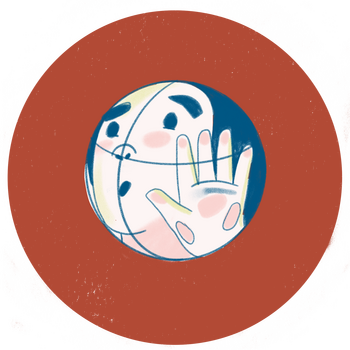
Digital Rights are Human Rights
The Digital Freedom Fund counted down to Human Rights Day 2020 with a series of short posts. Each post was written by a guest author and illustrates how the Universal Declaration of Human Rights applies in the digital age. The full series can be viewed here.

The right to be free from slavery
UDHR Article 4
When the UDHR was proclaimed by the United Nations General Assembly in Paris in December 1948, the internet was decades away from being invented. The drafters of Article 4 – the right not to be held in slavery or servitude, or made to do forced labour – could not have foreseen the role of future technology in the abuse of generations to come.
Fast forward to 2020, and the internet part of most of our daily lives: there are now over five billion unique mobile users and more than four billion internet users in the world today. Children (those under 18) account for an estimated one in three internet users around the world, whilst evidence suggests that children are going online at increasingly younger ages.
The world wide web is a land of opportunity for young people, offering connectivity, learning and, for many, freedom. Yet the reality is that it also brings with it the threat of harm and child rights abuses. The internet can be used to directly facilitate child sexual exploitation and trafficking, can provide a safe space for offenders to convene and acts as a readily available repository of abusive material.
Yet in this modern era of online-facilitated child sexual abuse and exploitation, the established framework of human rights is as relevant as ever: a child’s right to be safe from violence applies in a digital context to the same extent as any other. In this way, states have a responsibility to establish appropriate legal frameworks and strategies to protect children in the digital environment.
In 2019, the United Nations Committee that monitors the Convention on the Rights of the Child launched new guidelines designed to help states better implement the Convention’s Optional Protocol on the Sale of Children, Child Prostitution and Child Pornography*. Policies and strategies have had to evolve, just like technology has, in order to deal with the new threats facing children.
Despite international efforts, evidence shows that the “scale, severity and complexity of online child sexual exploitation and abuse is increasing at a faster pace than those aiming to tackle the activity can respond”.
Now more than ever, a collective response is needed. It is for this reason that WePROTECT Global Alliance exists: an organisation that unites civil society, law enforcement, governments and businesses in a single movement dedicated to ending online child sexual abuse and exploitation.
As we honour Human Rights Day 2020, we must urgently acknowledge that our ability to protect children from sexual abuse and exploitation both online and offline depends on how globally we can adapt and respond to the ever-changing technological landscape.
By Chloe Setter, Head of Policy at WePROTECT Global Alliance (WPGA).
* Note that WPGA advises against the use of phrases such as “child prostitution” and “child pornography” and instead uses child sexual exploitation and child sexual abuse material (CSAM). See here for more information.







